What is a vertex?
The point where two rays intersect to form an angle
What geometric objects make up an angle?
Two rays
True or False: This is the Angle Addition Postulate.
m/_RST+m/_PST=m/_RSP
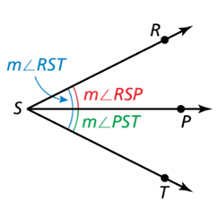
False
Small angle + Small angle = Large angle
m/_RSP+m/_PST=m/_RST
Find the supplement of angle 1 if the measure of angle 1 is equal to 58°.
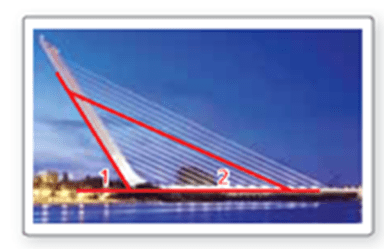
122°
Which angle name does not belong with the other three. Explain your reasoning.

Angle BCA does not belong because it is referring to a different angle than the other three.
What is an acute, right, obtuse, and straight angle measures?
Acute: Greater than 0° but less than 90°
Right: Exactly 90°
Obtuse: Greater than 90° but less than 180°
Straight: Exactly 180°
Name the angle below three different ways.
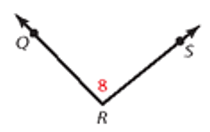
/_ 8
/_ R
/_ QRS
/_ SRQ
The foul lines of a baseball field intersect at home plate to form a right angle. A batter hits a fair ball such that the path of the baseball forms an angle of 13° with the third base foul line. What is the measure of the angle between the first base foul line and the path of the baseball?
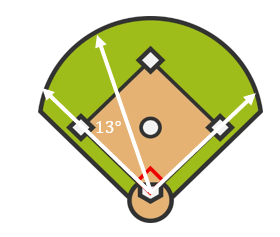
77°
Identify the relationships below and find the measure of the missing angle.

17) Right angle; b=37°
18) Linear pair; b=108°
19) Vertical angles; b=42°
Molly said that b=43°, but Tommy said that b=47°. Who is correct and why?
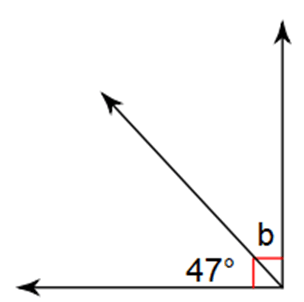
Molly is correct. Since the angle in the diagram is a right angle, in order to find b, you need to subtract 47° from 90° which will get you 43°.
Tommy might have been thinking that large angle was being bisected which is why he thought b was 47°.
What is the difference between complementary angles and supplementary angles?
Complementary angles sum up to 90°
Supplementary angles sum up to 180°
True or False: Angles sharing a common vertex must be named using three points, with the vertex as the middle point.
True
Find x if the measure of angle GHI is equal to 148°.
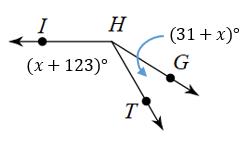
x=-3
Identify the relationship and solve for x.
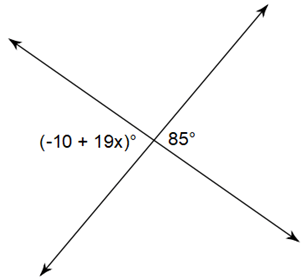
Vertical angles
x=5
A student wants the name the largest angle in the diagram below Angle H. Describe and correct the error in naming the largest angle in the figure.
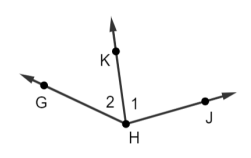
The largest angle cannot be named Angle H because that vertex is being shared with multiple angles. Therefore, the largest angle must be named using three letters and the vertex as the middle letter.
Example:
/_GHJ
What is the difference between vertical angles and linear pairs?
Vertical angles are nonadjacent (across from one another) and are congruent to each other
Linear pairs are adjacent and form a straight angle (sum to 180°)
A lighthouse keeper measures the angles formed by the lighthouse at point and three boats. Name three angles shown in the diagram below.

/_ JMK
/_ KML
/_ JML
Solve for x and the measure of angle FGH if the measure of angle FGH is equal to (14x+5)°.
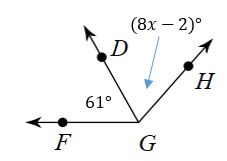
x=9
m/_PQI=131^@
Find the measure of the missing angles.
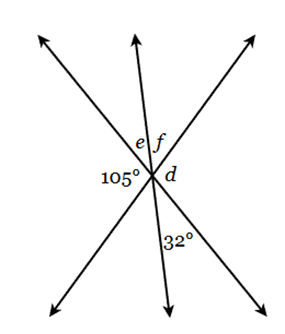
d=105^@
e=32^@
f=43^@
Describe and correct the error in identifying pairs of angles in the figure.
Angle 1 and Angle 3 form a linear pair.

Angle 1 and Angle 3 are not adjacent, therefore they cannot form a linear pair.
Angle 1 and Angle 3 are vertical angles because they are across from one another.
What are adjacent angles?
Two angles that share a common side and a common vertex, but do not overlap
Classify each angle (or pair of angles) as acute, right, obtuse, straight, complementary, supplementary, linear pair, or vertical. Give the best name possible using each word once.
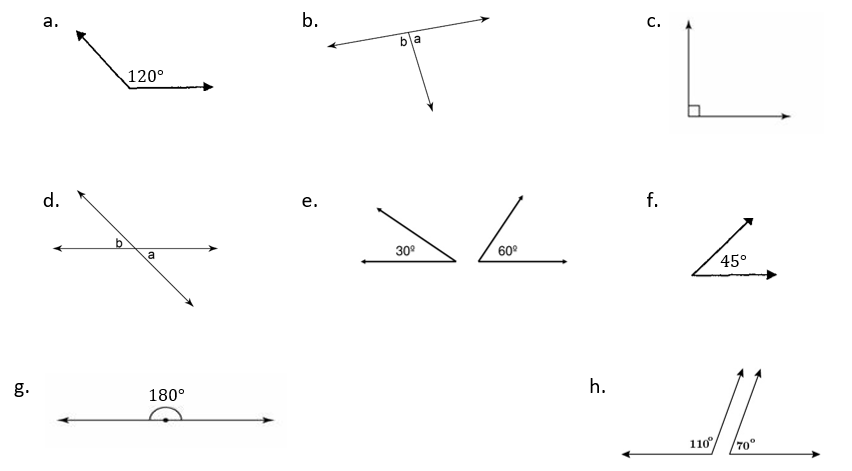
a. Obtuse angle
b. Linear pair
c. Right angle
d. Vertical angles
e. Complementary angles
f. Acute angle
g. Straight angle
h. Supplementary angles
Identify the bisector. Solve for x and find the measure of angle PQR.
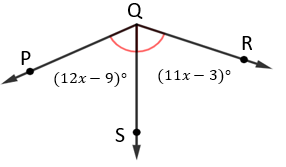
vec (QS)
x=6
m/_PQR=63°
When view from the side, the frame of a ball-return net forms a pair of __________ angles with the ground. Find the measure of angle BCE and the measure of angle ECD.

Supplementary
m/_BCE=144^@
m/_ECD=36^@
Mark claims that angle XYZ is a straight angle. Is that true? Why or why not?
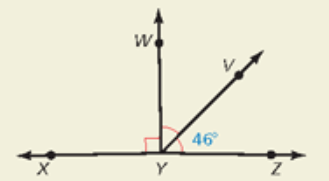
False
When you sum angles XYW (90°), WYV (46°), and VYZ (46°), they equal 182°. In order for an angle to be a straight angle, it must be exactly 180°. Therefore, angle XYZ cannot be a straight angle.